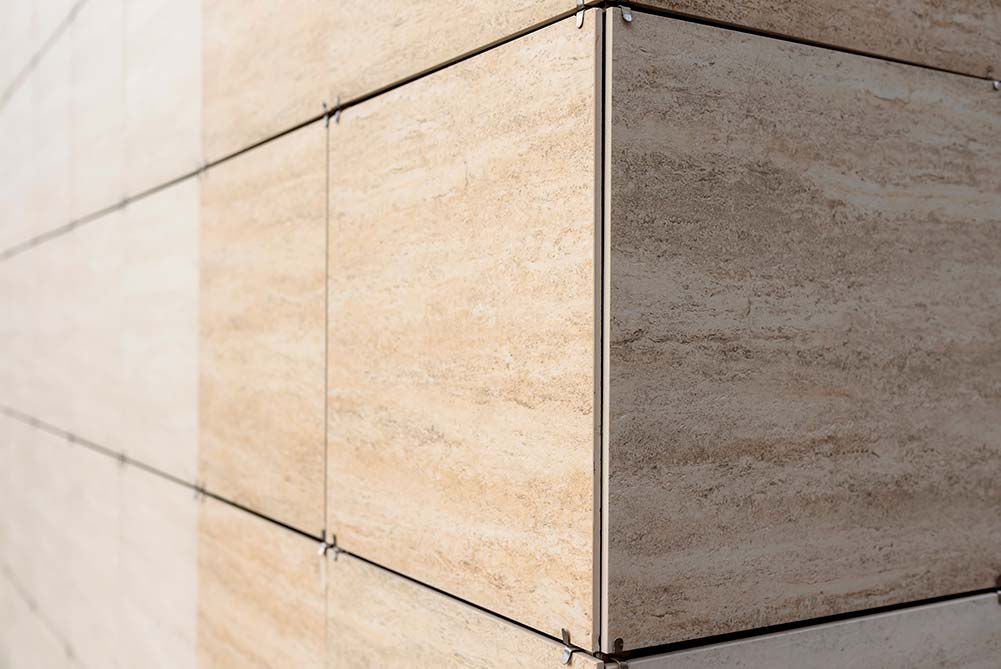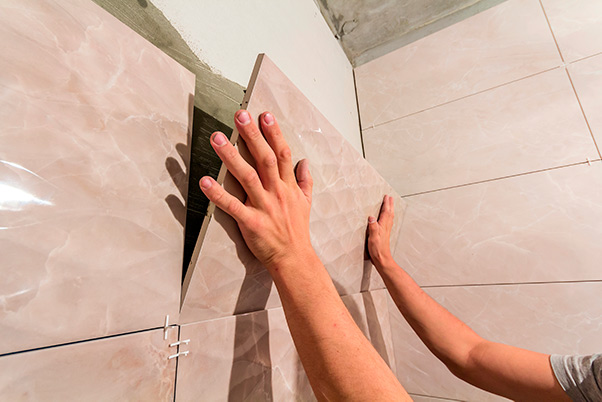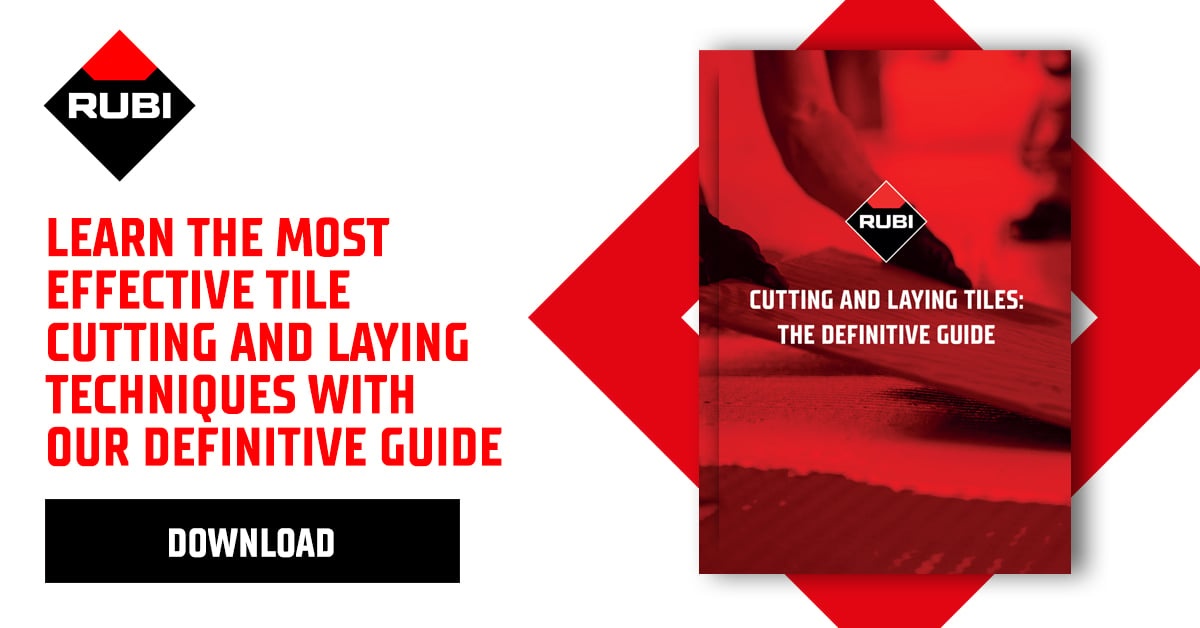A tile installation is a long and hard project to tackle. Some jobs can take days to complete. If you have tricky corners to tile, it’s even harder. Exterior corners mean you have to make a choice on how to hide your cut edges. You have to decide how to tile outside corners.
You have many options for this and there are no wrong answers. The only thing that matters is your taste, budget, and availability of your chosen tile.
This guide will walk you through all of your choices for tiling a corner and where to find the right tools to complete the job.


Trim
This is the simplest solution to tiling corners. This is a simple thin strip that gets set against a corner to hide the cut edges of your tile. These can be plastic or metal and come in a variety of colors.
Plastic trim is going to be the cheaper option here. The variety of colors that you can choose from when you buy it means that you should easily find some that match the tile you’ve chosen. They’re a good option for those who want a simpler design.
Metal, on the other hand, is going to be more durable. It can last much longer than plastic trim. Metal trim is also a good choice for a more modern and elegant look for your design.
These do a fantastic job of sealing the tiled wall to protect it against water damage and are easy to install. This is because you install them similarly to the rest of your tile.
Bullnose Edges
Bullnose edges are tiles that have a rounded edge to them. These are designed to sit at the ends of designs or on corners. The rounded edge means that an ugly cut edge won’t be showing in your final design.
These will also be fairly easy to install because they are also designed to be installed in a similar manner to the rest of your tile. The good news is that most tile is going to come with matching bullnose edge pieces. This can make this method of tiling your outside corners a no-brainer.
The bad news is that not every type of tile will have matching bullnose edges. In this case, it is possible to create your own bullnose edge pieces. For this, you will need a tile saw, sandpaper, and possibly even a polishing pad. Keep in mind that this method is best used on certain tiles like natural stone or ceramics. Practice making your bullnose edges well before starting your project.
Mitered Edges
Mitered edges are the hardest to pull off and should really be done by those with experience cutting tiles. This is accomplished by cutting the edges of two tiles at 45 degrees so that they form a ninety-degree angle when placed together. This must be done down the whole length of the corner.
However This is hard to do because of the accuracy involved. When done right, the cut edges of the tile should not be showing at all. This is how a lot of experts create tile “waterfall” effects on countertops.
The result should be a corner that appears to be completely seamless when the project is complete. This is why experienced tilers should do this part. They will need only the best tile cutters in order to pull this off.
You can use this method to create a stunning and modern design. It may be one of the hardest methods to use but it’s certainly the most rewarding. These are a good choice for a subway tile outside corner since the tile doesn’t have an odd shape to it.

Glazed Edges
Glazed edges are alternative tiles to bullnose and mitered edges. If you’re asking how to tile outside corners without trim, then this is arguably the easiest method.
A glazed tile has been painted and glazed on the sides just like the top of the tile. This means that if you leave the side exposed, you won’t be looking at an ugly, bare, cut edge of a tile. Instead, you can place these tiles where the edges will be seen because you will only see the beautifully painted sides.
This makes it easy to create a strong design that doesn’t feel like it’s being interrupted without the hard work involved in creating mitered corners. The main drawback to this being that you have to search for tiles with glazed edges that match your vision for your design. If you tend to be particular about your interior design, then perhaps this isn’t the right route for you.
Corner Tiles
Corner tiles are specifically designed for outside corners. This makes them another simple option for tiling an outside corner. They’re installed similarly to the rest of your tile.
These can come in two different types: rounded and right angles. The type you decide to use is really up to availability and your own personal style. There are no wrong answers here.
A right-right angle corner tile will look like the rest of your tiles with the exception that it’ll have two branches forming a right angle. These can be made for interior or exterior corners.
A rounded corner tile is going to be smaller to go between two regular tiles. It should match the color and style of the rest of the design. Before you decide how to tile rounded outside corners, you should get the right tile cutters for the job.
Unfortunately, this method is extremely reliant on availability. Not every tile is going to have a matching corner tile of either kind available. And unlike bullnose edge pieces, even a professional would find making these impossible.

Plan How to Tile Outside Corners for Your Project Today
Once you have decided how to tile outside corners for your project, then you’re only missing one thing: the tools. You need the best tile cutters, trowels, scoring wheels, and mortar mixers for tiling exterior corners in the industry.
The only place to get those is RUBI. We have the most reliable and durable tools in the industry at prices that can’t be beaten. Whether your project needs super accuracy or a gentle touch, we’re here to help you with your project. To get the best tools for your tile project check out our catalog and see what we can do to help bring your design to life today.


I am installing 12″x24″x 1/2″ marble stone tiles around a rectangular firepit. The edges of the tile are marble stone so look good and can be exposed without an issue. I have an outside 90 deg corner. I want the front side tile to totally cover the associated side tile. Do I butt that side tile to the back of the front tile or leave a grout spacing?
Hello Ted. Always leave space for grout, including in corners. It will make your installation last a lot longer.
Dear rubi.com owner, Keep it up!
Thanks! Will do! Keep on reading 😁